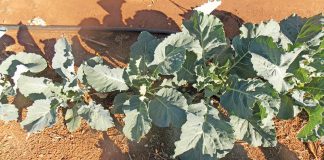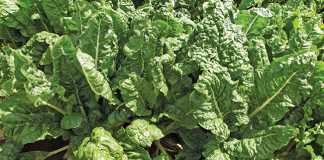Pollination is important – ensure there are enough insects doing the job. Bushveld areas usually have many species of small, solitary bees, only 2mm to 3mm long. They can do a good job and make it unnecessary to bring in beehives, so don’t only look for honeybees. Insufficient pollination will cause misshapen fruit, as the flesh will only develop where there are fertile seeds. The balance and amount of the soil’s cations, such as calcium, magnesium and potassium, will affect productivity and eating quality.
We also need to watch molybdenum and boron, which can be applied as a foliar application. Molybdenum deficiency usually only occurs in low-pH soil. It causes yellowish chlorosis and stunts developing leaves. It’s is easily rectified by applying 50g/ha to 100g/ha of sodium molybdate. If in doubt, apply 50g/ha as a precaution. Nitrogen management is extremely important. With too little nitrogen the foliage won’t cover the area, affecting yield potential.
We need a fair amount to get the crop growing uniformly and to provide enough vigour in the early stages for maximum yield. But excess nitrogen, when the fruit is advancing, can cause hollow areas in the flesh, and make it more starchy than crisp. A boron shortage can worsen the problem, as can stop/start irrigation. Affected fruit are usually slightly flattened with an uneven surface. The market does check every consignment’s quality.
Getting the balance of nutrients and water right takes experience. If we don’t understand and monitor these factors we’ll get variable results without knowing why. Determining ripeness is important. Look at the tendril nearest withered fruit. Experienced harvesters can tell by the duller, hollow sound the fruit makes when tapped. The area where the watermelon is in contact with the ground also turns from white to yellow when it’s ripe.
Bill Kerr ((016) 366 0616 or e-mail [email protected])













